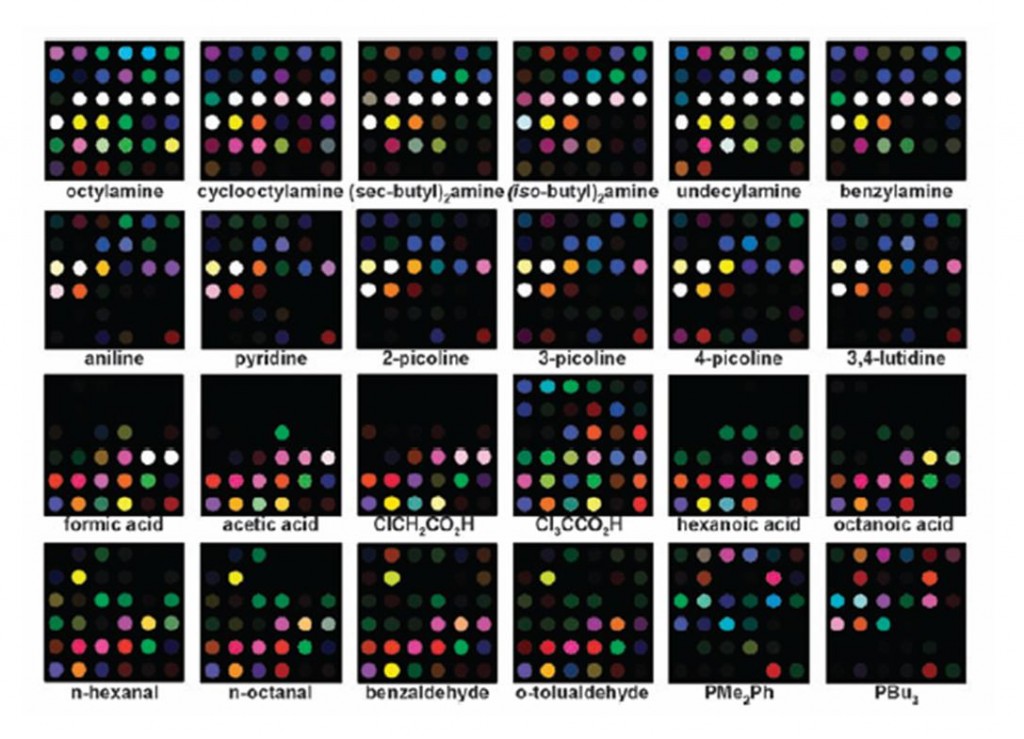Some people complain that modern life is too focussed on looks; while this may be true we can not ignore the fact that we are visual creatures. However, we have four other senses (sound, touch, smell and taste) which we can exploit. This Chem Soc Rev review by Kenneth Suslick and colleagues from the University of Illinois at Urbana-Champaign and Tehran University of Medical Sciences investigates how the sense of smell has led to developments in optical sensor arrays.
When you smell freshly mown grass, you are not identifying every chemical species, rather the smell originates from recognition of the pattern of responses of several hundred receptors. This response is what you ultimately recognise as freshly mown grass. Rather than using olfactory receptors, it is possible to use chemoresponsive colorants to generate unique optical fingerprints of any odorant or mixture of odorants. Such an approach combines the benefits of the olfactory sensing system with our preference for a visual display.
This very readable review introduces the concept and advances in the use of cross-reactive sensor arrays which allow molecular recognition via recording of unique patterns of response. Such arrays can probe a variety of chemical properties, such as: hydrophilicity, solubility, redox, hydrogen bonding, Lewis donor-acceptor and proton acidity and basicity. The variety of chemical properties that can be probed allows impressive discrimination between similar analytes.
Cross-reactive sensor array patterns can be very complex in nature. This complexity requires the use of more sophisticated statistical analysis than most chemists are comfortable with. However, an overview of the three most common statistical approaches is provided which is both informative and readily digestible by the non-expert.
Having reviewed the fundamentals of the optoelectronic nose the authors turn their attention to a myriad of applications, from the detection of toxic industrial chemicals and explosives to foods and beverages. The final section highlights how the primary limitation of sensor arrays is also their primary strength– but you will have to read the review to find out what that is!
I would strongly recommend this review on the statistical analysis section alone but I can confidently say that there will be something here for everyone.
Read this HOT Chem Soc Rev Review in full now:
Optical sensor arrays for chemical sensing: the optoelectronic nose
Jon Askim, Morteza Mahmoudi and Kenneth Suslick
Chem. Soc. Rev., 2013, Advance article
DOI: 10.1039/C3CS60179J
Iain Larmour is a guest web writer for Chem Soc Rev. He has researched a wide variety of topics during his years in the lab including nanostructured surfaces for water repellency and developing nanoparticle systems for bioanalysis by surface enhanced optical spectroscopies. He currently works in science management with a focus on responses to climate change. In his spare time he enjoys reading, photography, art and inventing.











